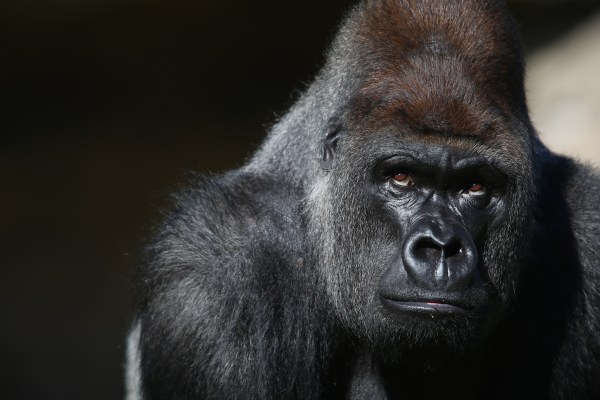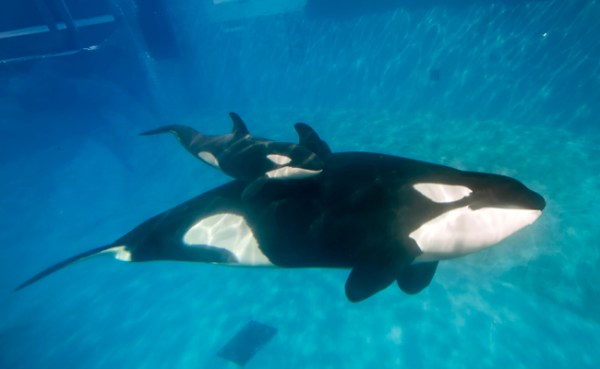
Thought experiment: Let’s concede the fact that at this particular time in history, once a young child was inside the gorilla enclosure at the Cincinnati Zoo, officials had no choice but to put the animal down. Let’s skip past the arguments (all speculative, at this point) about what the gorilla could’ve/would’ve/might’ve done to the child and trust the trained zoo staff who made the tough choice to kill a much beloved animal. Nothing inflammatory so far, right? We’re simply electing, for the sake of argument, to put our trust in the split second decision made by trained experts rather than diving down a rabbit hole of “It looked to me like…”
In other words, let’s agree not to be what Thane Maynard, director of the Cincinnati Zoo, called “Monday morning quarterbacks.” Let’s walk the high road, with Jack Hanna.
It’s better this way, because what’s done is done. But this does bring up a bigger question: Is it time to consider that we don’t deserve to have big animals in captivity at all? On its face, this sounds reactionary. Zoos have been around for a long time — the Cincinnati Zoo is the second oldest in the country, opening in 1875 — why would the death of one gorilla bring this question to the fore? Isn’t it a little dramatic to call the entire keeping-large-animals-in-enclosures industry into question all of a sudden?
Quite simply: No. The answer to the question about keeping big mammals might still end up being “it’s okay to keep them,” but asking the question, after two incidents resulting in three dead animals in a week, is perfectly reasonable. The relationship between humans and animals has changed dramatically since the founding of the Cincinnati Zoo — with many of those changes coming in fits and spurts after headline grabbing events captivate the public consciousness. Blackfish changed history and the shooting of Harambe just might do the same. So, at the very least, it’s safe to say that the question is fair, because singular events like these really do lead to sweeping change.
To actually answer the question, however, we need to understand what the question means. All of human interaction with animals comes down to one simple idea: Dominion. Do we, as humans, have the right to eat, breed, hunt, train, shame, or keep animals? To what degree should we exert our power — which we’ve held (for the most part) since the invention of steel — over them? All animal discussions are really about navigating this one issue. When we collectively decide that keeping chickens in cages is inhumane, thereby causing cage-free eggs to become the new norm, what we are really saying is: “We don’t have the right to rip the beaks off of chickens and keep them in tiny cages, but we still have the right to keep them enclosed and harvest their eggs.” It’s a question of “how much power is acceptable,” it exists on a spectrum, and the majority-held opinion since the founding of the Cincinnati Zoo is shifting away from complete human dominion and toward a more balanced human-animal interplay.
Nowhere is this seismic shift as evident as with humans keeping large mammals in captivity. Ringling Brothers is about to begin their first tour without elephants. SeaWorld will no longer breed or purchase orcas. This question is potent and its time seems to be now.

Understanding The Case For No Large* Animals In Zoos
To start, there’s the simple argument that it’s not our right. This is the position that PETA takes over and over and is mostly an intuitive one. People arguing this stance are essentially saying, “It just feels wrong, it seems like we’re exerting too much dominion.”
This primary argument can be amended with too many sub arguments to lay out here, but mentioning a few seems worthwhile.
- The fact that our own understanding of animals is incomplete, imperfect, and constantly evolving. We’re learning about them at a rapid rate, and our knowledge of their complexity may very well outgrow our current modes of keeping them.
- Zoos can’t possibly accommodate the space required by big animals (Mountain Gorillas have a 16-square-mile range). This is where the size qualifier comes into play. Although, size is a mostly arbitrary limit to put on the discussion.
- Because we empathize with large (and/or “smart”) animals more deeply — empathy for animals being directly tied to the level at which we anthropomorphize them — any potential mistreatment of them somehow feels like a crime against ourselves.
In this case specifically, the increased dominance of technology and its ability to make a tricky situation even trickier seems like another sub argument against zoos. A few decades ago, Harambe’s keepers would have been able to make their call or let the situation evolve knowing that, if the very worst came to very worst, they would be hounded by newspaper reporters and have to defend their actions in the news or court. In 2016, the handlers knew they were being recorded for the theater of public opinion; they could 100% bet that the video would be on YouTube within hours; and they were damn sure that if the situation went south, they would be globally reviled. So, you could make the argument that iPhones and social media — which add extra shades of gray to a situation like this — are in themselves a reason why we ought not keep big animals captive. They add variables to an equation that can’t afford any more variables.
The tech argument could also be used for when it comes time to ask how a boy ended up in a gorilla enclosure in the first place. Yes, kids are wily and run off, but it seems pretty fair to suggest that, on average, the adult getting dragged through a zoo by their excited child has a lot more diversions now than they did in 1875. Our desire to protect people from their own mistakes is, essentially, a desire to make life more predictable. Most theme parks (which any zoo essentially is, with the theme being “animals!”) have gone to great lengths to keep us safe from ourselves. Walk through Disneyland sometime and admire how “human proof” it is. Even the links on the chains that fence off the landscape are welded together, so that no one gets pinched. Perhaps in this modern era, with so many forces trying to distract us, animals are just too unpredictable for us to manage?
That’s not to say that the whole debate is one sided, it’s certainly not. One of the best arguments for zoos is that zoos are often on the forefront of animal sustainability and education. So while they’re exerting dominion over a few specific animals, they’re also protecting entire species. This is true and undeniable. The animals in zoos essentially become ambassadors for their kind, giving us a visual representation of the animals we ought to protect. It’s a very utilitarian argument, in that the life of the individual gorilla is deemed less valuable than its collective species. Most humans would probably agree with that point, on some level. The problem is that because humans are making this utilitarian decision without input from gorillas, or lions, or orcas, we’re forcing our philosophical construct on them. Once again, this is a question of dominion. Do we have the right to do this on behalf of animals? This argument folds inward on itself in an interesting way when we consider that the forces we’re protecting animals from is us. Meaning that certain animals are in captivity so that humans will be motivated to protect other animals from humans.
Obviously, when we stop talking about one dead gorilla, the issue gets infinitely more complicated. Outrage will have to be replaced with rational thought. But the questions should be asked, and this is the moment to do so. There is a sea of change happening and whatever we decide, it will surely be influenced by events like Harambe’s killing, documentaries like Blackfish, and social media outcries. This is how things change, regardless of what that change looks like. The interaction between humans and animals is a major part of our history and the next chapter begins now.
*Considering the length of this piece and the massive size of the topic, we chose the limit it to “big” animals and refer mostly to large mammals in the discussion. We’ve also chosen to leave cats and dogs out of the article for reasons of scope.






